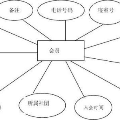
Implicit neural representation (INR) characterizes the attributes of a signal as a function of corresponding coordinates which emerges as a sharp weapon for solving inverse problems. However, the expressive power of INR is limited by the spectral bias in the network training. In this paper, we find that such a frequency-related problem could be greatly solved by re-arranging the coordinates of the input signal, for which we propose the disorder-invariant implicit neural representation (DINER) by augmenting a hash-table to a traditional INR backbone. Given discrete signals sharing the same histogram of attributes and different arrangement orders, the hash-table could project the coordinates into the same distribution for which the mapped signal can be better modeled using the subsequent INR network, leading to significantly alleviated spectral bias. Furthermore, the expressive power of the DINER is determined by the width of the hash-table. Different width corresponds to different geometrical elements in the attribute space, \textit{e.g.}, 1D curve, 2D curved-plane and 3D curved-volume when the width is set as $1$, $2$ and $3$, respectively. More covered areas of the geometrical elements result in stronger expressive power. Experiments not only reveal the generalization of the DINER for different INR backbones (MLP vs. SIREN) and various tasks (image/video representation, phase retrieval, refractive index recovery, and neural radiance field optimization) but also show the superiority over the state-of-the-art algorithms both in quality and speed. \textit{Project page:} \url{https://ezio77.github.io/DINER-website/}
翻译:隐式神经表示(INR)将信号属性作为相应坐标的函数刻画,在解决反问题方面具有锋利的效力。然而,INR的表达效力受网络训练中的谱偏差限制。在本文中,我们发现通过重新排列输入信号的坐标可以极大地解决这种与频率有关的问题。我们提出了难变数学隐式神经表示(DINER),通过将哈希表增加到传统的INR骨干中,使其可以解决这一问题。对于共享相同属性直方图和不同排列顺序的离散信号,哈希表可以将坐标投影到相同的分布中,使映射的信号可以更好地使用后续INR网络进行建模,从而显着减轻谱偏差。此外,DINER的表达力由哈希表的宽度决定。不同宽度对应于不同的属性空间几何元素,例如,当宽度分别设置为1、2和3时,对应于属性空间中的1D曲线、2D曲率平面和3D曲率体。几何元素覆盖区域越多,表达力越强。实验不仅揭示了DINER对不同INR骨干(MLP vs. SIREN)和各种任务(图像/视频表示、相位恢复、折射率恢复和神经辐射场优化)的泛化,而且在质量和速度方面显示了超越业界最先进算法的优越性。 项目页面: https://ezio77.github.io/DINER-website/


